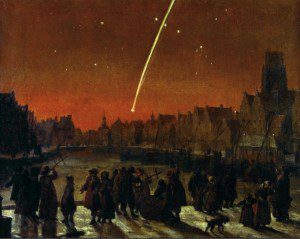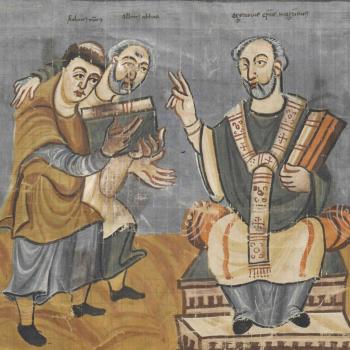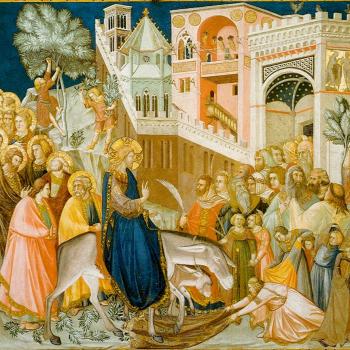The years between 1675 and 1685 were marked by repeated catastrophes, involving wars and revolts, dearths and plagues, and unprecedented weather conditions. Not surprisingly then, across Christian Europe, many believers imagined the fast approaching end of the existing world.
It was in 1678 that the first part of John Bunyan’s Pilgrim’s Progress described the simple Christian beginning his quest after discovering the powerful text, “Flee from the wrath to come!” If all the other disasters were not proof enough of the Last Times, 1680 actually brought a startling heavenly sign in the form of the Great Comet. (The word “disaster” itself derives from the Italian for “bad star”).
This image is in the public domain.
As so often happens, turmoil and violence begot apocalyptic views, but by no means among the usual suspects of the radical sects – Baptists like Bunyan. Once upon a time, scholars tended to assume that the rise of Enlightenment from the 1660s onwards meant a declining interest in such ideas among mainstream scholars and churches. In England, as we know, this was the age of the Royal Society, and the towering intellects of the Cambridge Platonists. Now, though, we realize just how strongly older apocalyptic ideas survived among the mainstream and orthodox, and they boomed around 1680 among such otherwise respectable Puritan clerics as Richard Baxter. Isaac Newton’s occult and millenarian obsessions are well known.
Apocalyptic thought coexisted remarkably easily with modernity, and even Enlightenment.
Another of the great minds of the age was Henry More, the Platonist and Fellow of the Royal Society, but his publications at this time included Apocalypsis Apocalypseos (1680), on Revelation, and his 1681 exposition of the Book of Daniel.
Also in 1681, More was instrumental in the publication of Saducismus Triumphatus, one of the most significant works ever written in English on the subject of witches and the occult. Although published posthumously under the name of Joseph Glanvill (who died in 1680), it was extensively edited by More. In order to challenge prevailing skepticism, and to assert the imminence of apocalypse, Saducismus Triumphatus offered a stunning array of case-studies of witches, ghosts, apparitions and poltergeists. Among other lasting impacts, the book exercised a potent influence on Cotton Mather, who some years afterwards had to interpret the disturbing events at Salem.
In the Germanic world too, debates over the End Times sharply divided the mainstream established churches. One celebrated prophet in Germany in the early 1680s was the brilliant theologian and astronomer Johann Jacob Zimmerman, who predicted the imminent end of the world: this would certainly occur no later than 1693. He was ejected from his post as a Lutheran minister in 1685, and he urged faithful Christians to separate from a dying society. His views were widely influential, especially among Pietists and radical Lutherans.
In 1694, his Transylvanian-born disciple Johannes Kelpius led the sect’s emigration to the Philadelphia area. Following a cryptic passage in Revelation, they founded the “Society of the Woman in the Wilderness.” Those “mystics of the Wissahickon” made south-eastern Pennsylvania a center for radical religious experimentation through the following century (witness the legendary Pietist monastic settlement at Ephrata Cloister). Kelpius had the honor of being cited respectfully by Isaac Newton, in the context of his observations of the Great Comet.
Readers today might find it difficult to draw lines between “modern” science and what they imagine to be pre-scientific thought. That is nowhere more apparent than among the German mystics of that era, who combined apocalyptic thought with highly developed astronomy and mathematics. They also delved deeply into astrology, alchemy, the occult, and the magical properties of plants and stones. Kelpius had as much in common with the magus Prospero as with Robert Boyle.
In matters of religion and science, never, ever, try to draw sharp lines between the Early Modern period and the Enlightenment.
One very useful book on the era is Warren Johnston Revelation Restored: The Apocalypse in Later Seventeenth-Century England (2011).

















